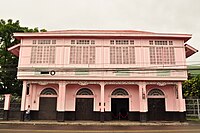
Negros Occidental, officially the Province of Negros Occidental (Hiligaynon: Kapuoran sang Nakatungdang Negros (Negros Occidental; Tagalog: Lalawigan ng Kanlurang Negros, is a province in the Philippines located in the Western Visayas region. Its capital is the city of Bacolod, of which it is geographically situated and grouped under by the Philippine Statistics Authority, but remains politically independent from the provincial government. It occupies the northwestern half of the large island of Negros, and borders Negros Oriental, which comprises the southeastern half. Known as the "Sugarbowl of the Philippines", Negros Occidental produces more than half the nation's sugar output.

Bacolod, officially the City of Bacolod, is a 1st class highly urbanized city in the region of Western Visayas, Philippines. It is the capital of the province of Negros Occidental, where it is geographically situated but governed administratively independent.

Western Visayas is an administrative region in the Philippines, numerically designated as Region VI. It consists of six provinces and two highly urbanized cities. The regional center is Iloilo City. The region is dominated by the native speakers of four Visayan languages: Hiligaynon, Kinaray-a, Aklanon and Capiznon. The land area of the region is 20,794.18 km2 (8,028.68 sq mi), and with a population of 7,954,723 inhabitants, it is the second most populous region in the Visayas after Central Visayas.
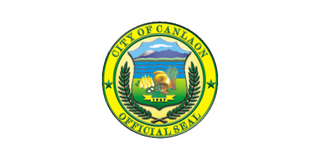
Canlaon, officially the City of Canlaon, is a 4th class component city in the province of Negros Oriental, Philippines. According to the 2020 census, it has a population of 58,822 people.
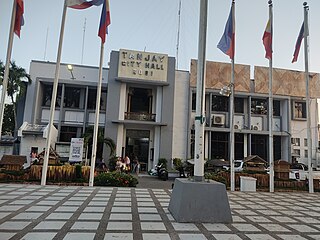
Tanjay, officially the City of Tanjay, is a 4th class component city in the province of Negros Oriental, Philippines. According to the 2020 census, it has a population of 82,642 people.

Sibulan, officially the Municipality of Sibulan, is a second class municipality in the province of Negros Oriental, Philippines. According to the 2020 census, it has a population of 64,343 people.

Vallehermoso, officially the Municipality of Vallehermoso, is a 3rd class municipality in the province of Negros Oriental, Philippines. According to the 2020 census, it has a population of 40,779 people.

Zamboanguita, officially the Municipality of Zamboanguita, is a 4th class municipality in the province of Negros Oriental, Philippines. According to the 2020 census, it has a population of 29,569 people.

Cadiz, officially the City of Cadiz, is a 2nd class component city in the province of Negros Occidental, Philippines. It was the capital of the short-lived province of Negros del Norte, before the creation of the province was declared unconstitutional on August 18, 1986.

Escalante, officially the City of Escalante, is a 4th class component city in the province of Negros Occidental, Philippines. According to the 2020 census, it has a population of 96,159 people.
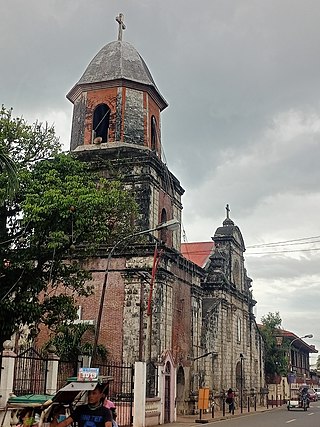
Hinigaran, officially the Municipality of Hinigaran, is a 1st class municipality in the province of Negros Occidental, Philippines. According to the 2020 census, it has a population of 88,909 people.

Isabela, officially the Municipality of Isabela, is a 2nd class municipality in the province of Negros Occidental, Philippines. According to the 2020 census, it has a population of 64,516 people.

Kabankalan, officially the City of Kabankalan, is a 1st class component city in the province of Negros Occidental, Philippines. According to the 2020 census, it has a population of 200,198 people making it the second most populous city in Negros Occidental next to Bacolod.

La Carlota, officially the City of La Carlota,, is a 4th class component city in the province of Negros Occidental, Philippines. According to the 2020 census, it has a population of 66,664 people. making it the least populous city in the province.

Talisay, officially the City of Talisay, is a 4th class component city in the province of Negros Occidental, Philippines. According to the 2020 census, it has a population of 108,909 people.

Victorias, officially the City of Victorias, is a 4th class component city in the province of Negros Occidental, Philippines. According to the 2020 census, it has a population of 90,101 people.

Culaba, officially the Municipality of Culaba, is a 5th class municipality in the province of Biliran, Philippines. According to the 2020 census, it has a population of 12,972 people.The town's populace predominantly speak Waray language.

The Negros Revolution, commemorated and popularly known as the Fifth of November or Negros Day, was a political movement that in 1898 created a government on Negros Island in the Philippines, ending Spanish control of the island and paving the way for a republican government run by the Negrense natives. The newly established Negros Republic lasted for approximately three months. American forces landed on the island unopposed on February 2, 1899, ending the island's independence. Negros was then annexed to the Philippine Islands on 20 April 1901.

The Bacolod Metropolitan Area, simply known as Metro Bacolod, is the 8th-most populous and the 6th-most densely populated metropolitan area out of the 12 metropolitan areas in the Philippines. This metropolitan area as defined by the National Economic and Development Authority (NEDA) has an estimated population of 1,435,593 inhabitants as of the 2020 official census by the Philippine Statistics Authority.
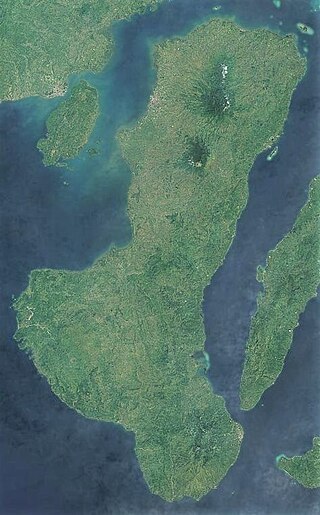
Negros is the fourth largest and third most populous island in the Philippines, with a total land area of 13,309 km2 (5,139 sq mi). The coastal zone of the southern part of Negros is identified as a site of highest marine biodiversity importance in the Coral Triangle.














